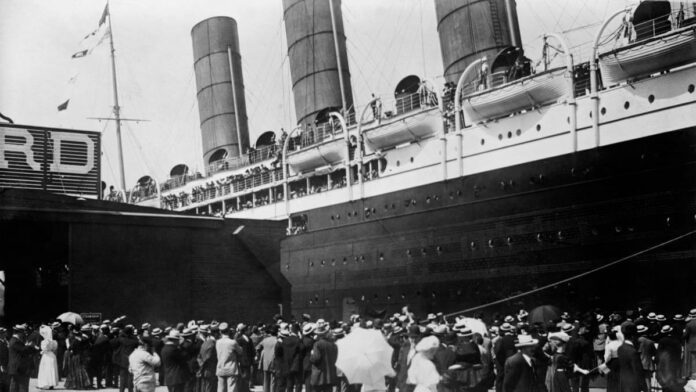Cunard has been sailing since 1840, so it’s not surprising there have been some notable historic events in that time.
Here are some fascinating facts and tragic events that Cunard has experienced.
Founder Samuel Cunard was a Quaker and while he was not overly religious, Quakers were admired for their truth and honesty in business conduct. In fact, many famous business names today began with Quaker families including Cadburys, Lloyds, Clarks shoes and Barclays Bank. Weirdly, however, not Quaker oats, which just uses the name for marketing purposes.
Samuel was made a baronet in 1859. The title became extinct in 1989 when the seventh baronet Sir Guy died.
Flushed with success
Cunard installed the first on-ship flushing toilets in 1870. Hurrah! And also, let’s not think about the alternative in rough seas.
Cunard has played a part in every major English conflict from the Crimean War to the first Gulf War in 1990 as troop transports, hospital ships and store ships.
In the 1850s, Cunard was commissioned to carry horses to the Crimean War, in fact almost all the horses used in the Light Brigade travelled on a Cunard ship. Arabia carried 7500 horses to the war, at the tedious rate of 203 at a time.
Churchill claimed Cunard’s contribution to WWII shortened the war in Europe by at least one year.
History buffs will also know Cunard’s Carpathia was the first ship to arrive on the scene after the Titanic sank.
Pets ahoy
There is only one truly pet-friendly cruise ship and that’s the Queen Mary 2. On certain transatlantic sailings between New York and Southampton, and vice versa, you can bring your dog or cat.
But don’t expect to be snuggling up to Rover or Whiskas, they are confined to their own area. Expect to pay $1000 per dog and $1000-$1600 per cat.
Notable passengers for Cunard include Mark Twain, Rita Hayworth, Judy Garland, WWII sweetheart Vera Lynn, Frank Sinatra and Sir Noel Coward. In the modern era, Cunard has hosted John Cleese, Carrie Fisher, Jane Seymour and Meryl Streep.
Enough tea is consumed each year on Cunard’s fleet to fill an Olympic-size swimming pool.
During the mass immigration to America of the 1880s, Cunard brought over a million of the 2.5 million people choosing to settle in the United States.
Record still stands
On one voyage in 1943, the Queen Mary carried more than 16,000 people in her work as a troop ship. That record still stands for the most people on a vessel.
In its early days, each ship carried a cow they used for milk, which they then slaughtered for meat at the end of the trip. Literally, poor cow.
Cunard has sailed 249 ships and lost 20 ships in WWI and seven in WWII.
The Lancastria was torpedoed on 17 June 1940 and estimates put the loss of life at somewhere between 4000-7000. The numbers are unreliable as it was on an emergency mission to evacuate troops and British nationals from France, and no-one had a chance to count passengers on board. It is the largest single ship loss of life in British maritime history.
The massive loss of life was due to the ship sinking within 15-20 minutes of being torpedoed.
Have you travelled on a Cunard ship? Why not share your experience in the comments section below?
Also read: Nine cruises you need to book in advance

